Our fourth annual General Assembly took place from the 4th to the 7th of May 2021. Part 1 of this summary detailed the updates from all the EUCP work packages, covering the first two days of the meeting. Here, we will cover the discussions that took place on the final two days of the General Assembly, on topics including taking our science and user engagement forward towards the end of the project. A focus for these sessions is to think about the project legacy in order to ensure that the science outputs of EUCP make a lasting impact.
Day 3 of the General Assembly began with a session discussing key outcomes from the project, how we make our results available and ensuring their effective use. Delegates agreed all these activities should form part of the legacy of EUCP, which is very important to remember as the project draws closer to its end.
This was followed by an update on our communications activities from Alexander Askew, along with Katrina MacNeill, who had recently joined the project. EUCP’s involvement on social media, through Twitter and YouTube, has expanded our reach to thousands of people, while recent website enhancements have improved accessibility. The Newsletter continues to be a good place to promote EUCP research and our plain-language paper summaries, launched at the General Assembly in 2020, have also proven popular.
The next session focussed some of our earlier discussions about exploitation onto how EUCP can work with the Copernicus Climate Change Service (C3S). A key part of this is the process of moving from innovative science to a valuable operational system. This will also form a key part of the EUCP legacy; C3S can help make EUCP climate information more useful, useable and available, contributing to a shared infrastructure for climate science. Ideas for how this could be optimised came from the Multi-User Forum workshop, held in February 2021.
Day 3 ended with a team quiz, a valuable opportunity for socialising, even in the virtual space. The quiz was won handily by Team 2, who dubbed themselves the EUCP Superstars!
Our final day of the General Assembly was dedicated to thinking about tailoring EUCP science to users. First, we heard from Mark Payne of the Technical University of Denmark and the Blue-Action project, with his insights on tailoring scientific outputs to user requirements. It is important for EUCP to recognise who and where needs our climate services the most, and therefore where our efforts are best directed. The link between scientists and users or policymakers can also be complicated by skill or communication barriers, and multiple intermediate stages in this relationship could prove useful.
We then heard from the Met Office’s Ben Booth, who has been working with the Regional Environmental Protection Agency (ARPA) of Veneto on how they can benefit from climate services. The issue of data skills was raised again in reference to the massive amount of climate model data available; the work of EUCP on clustering or weighting climate model results could provide a solution here.
Discussion then turned back towards the legacy of EUCP. Colleagues agreed the significant outcomes of the project include:
- our work on merging climate predictions and projections in space and time,
- producing a foundation for an operational climate prediction system for Europe,
- creating guidance for future work on merging climate predictions and projections,
- our guidance on best use of climate information, including helping users better understand what climate services can and cannot do, and
- our pioneering effort at building bridges between disparate scientific specialisms, and between scientists and climate information users.
Tangible outputs from the project include case studies, climate data and our dissemination activities. The amount of interest we have received from users was also highlighted, giving rise to ideas about involving them more in our workflow from climate data to useful products, helping emphasise the value of EUCP, as well as putting its limitations in context. The maintenance of this community of scientists and users across all their fields was emphasised as a key part of ensuring EUCP’s legacy.
The General Assembly wrapped up with praise for the excellent science and products that EUCP has produced so far. We were pleased to welcome two members of our advisory board, who had particular praise for the size of our Multi-User Forum, and the involvement of many users of climate information outside of science. Virtual spaces have provided several unique opportunities for meetings like this, allowing many colleagues to join on an equal footing. As well as us all having the opportunity to highlight the outstanding work EUCP has achieved so far, we now have many exciting ideas and endeavours to get stuck into before the next General Assembly.





 Funded by the European Union under Horizon 2020.
Funded by the European Union under Horizon 2020.